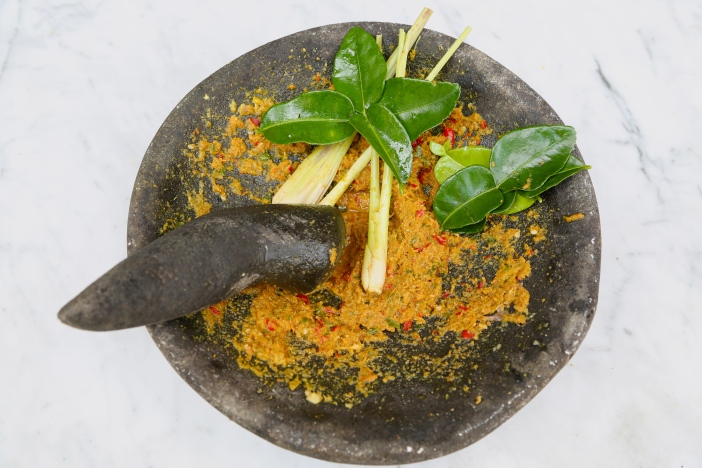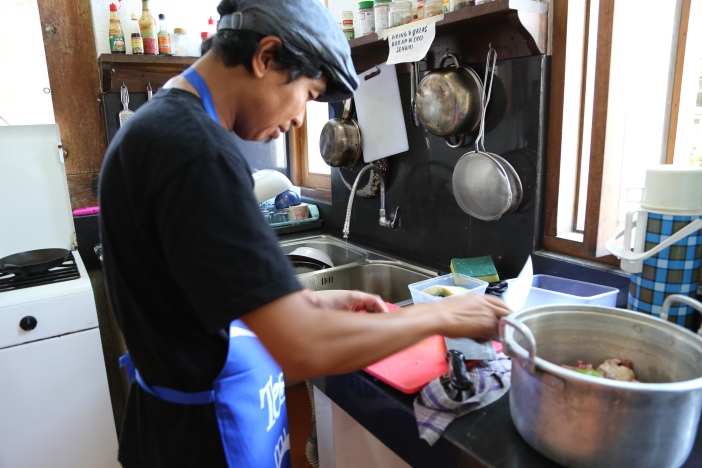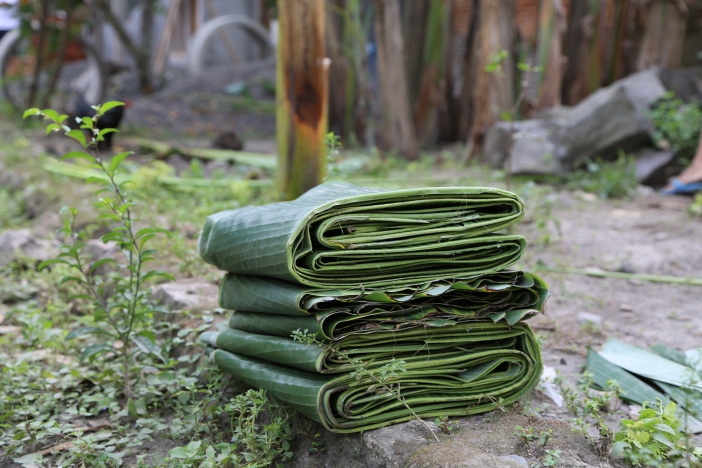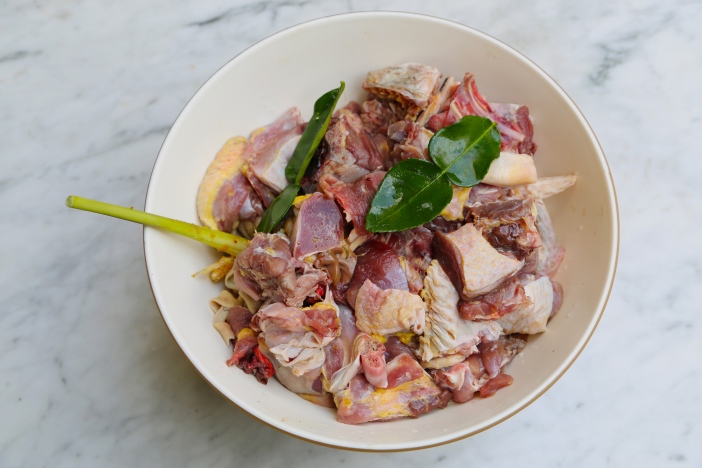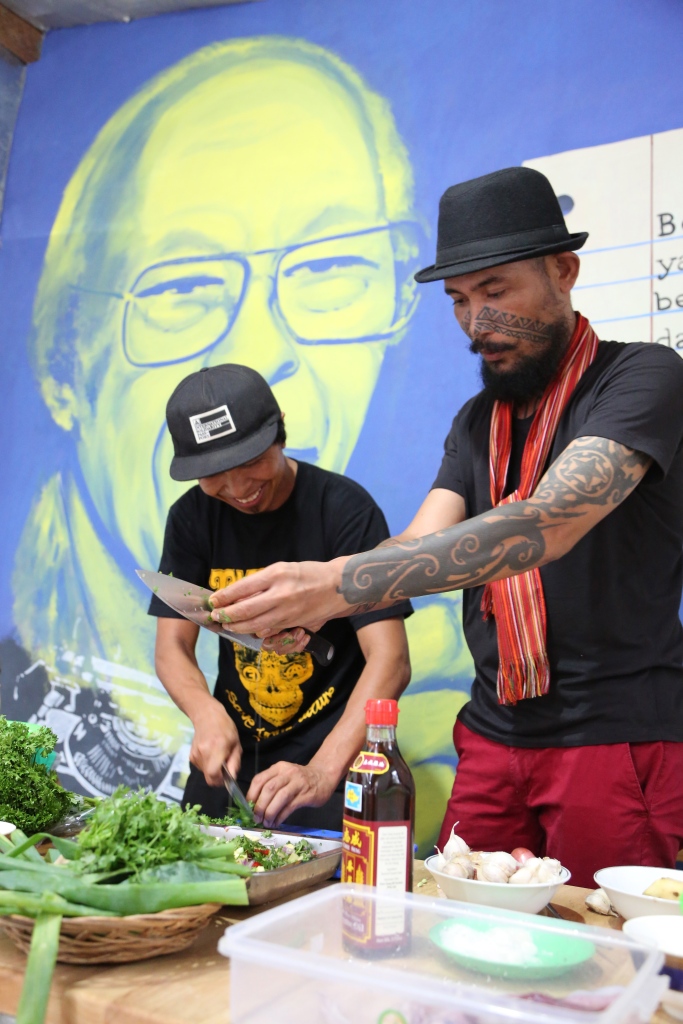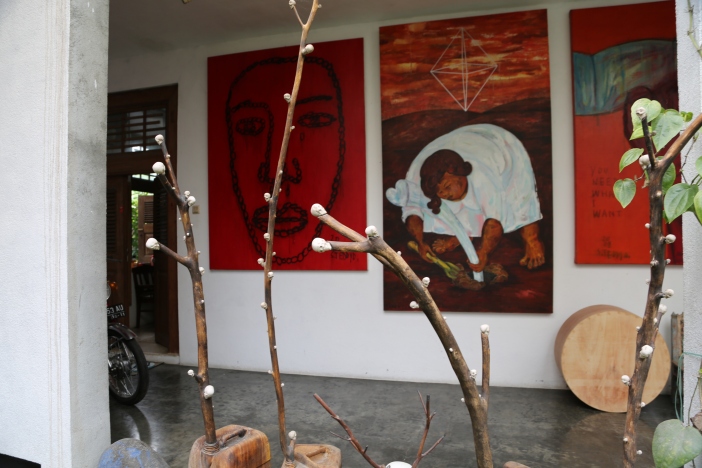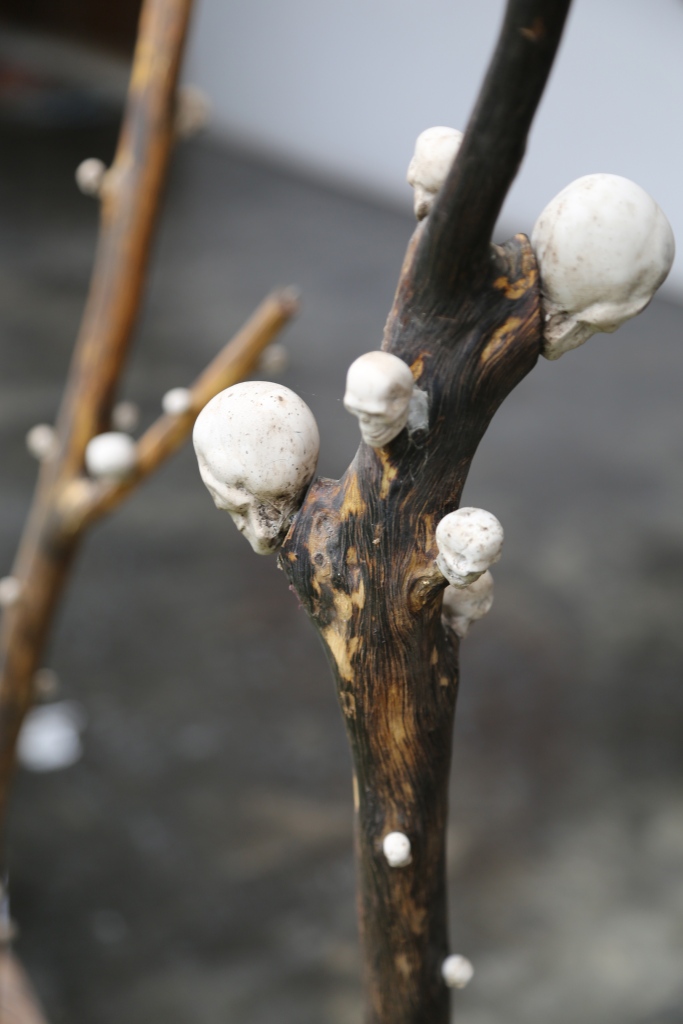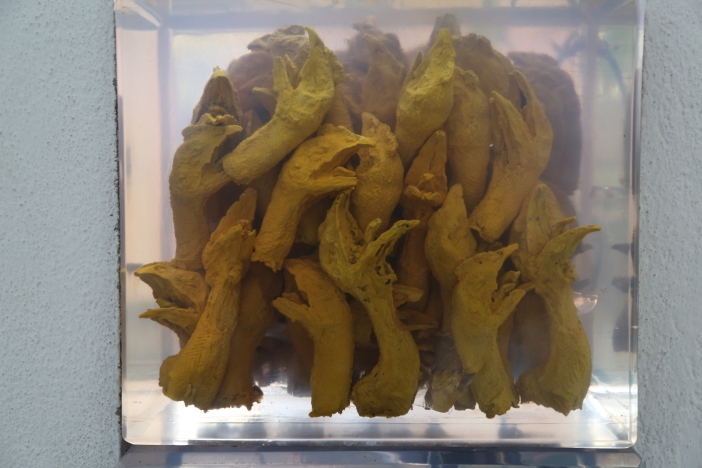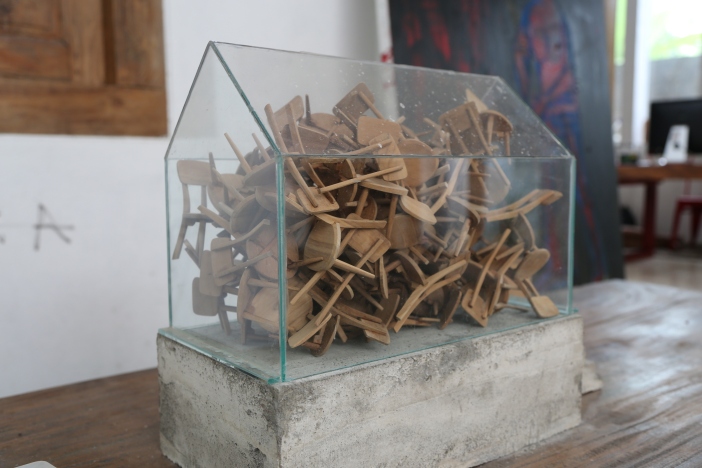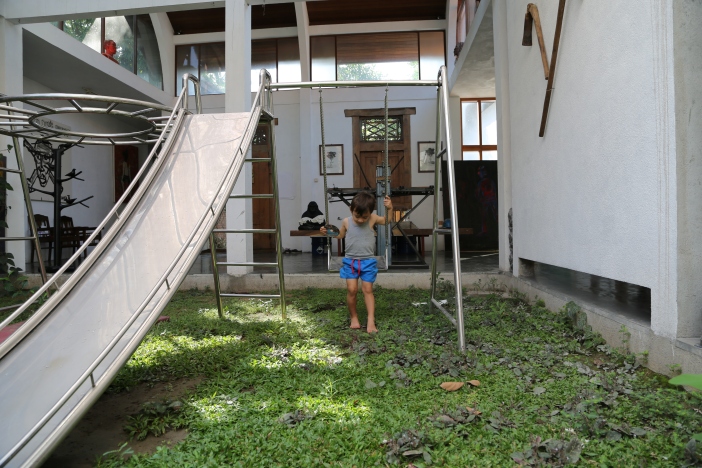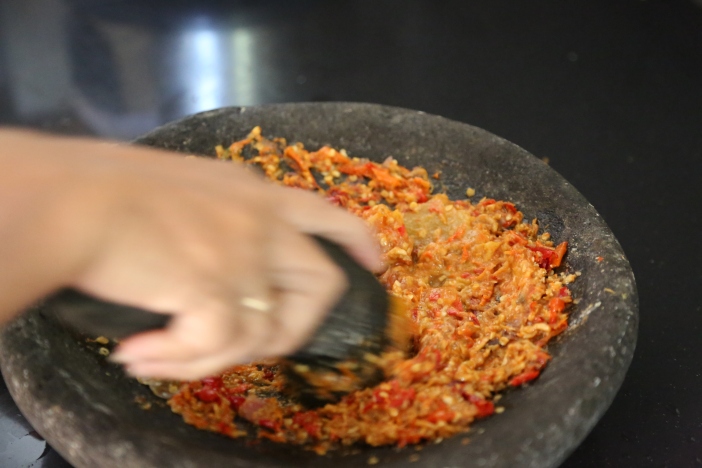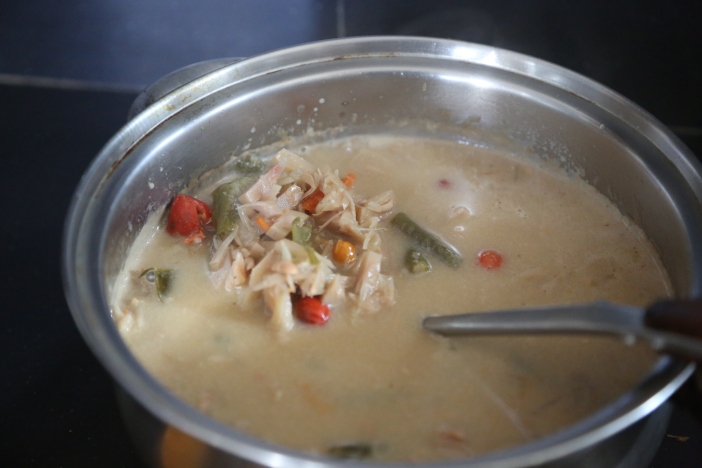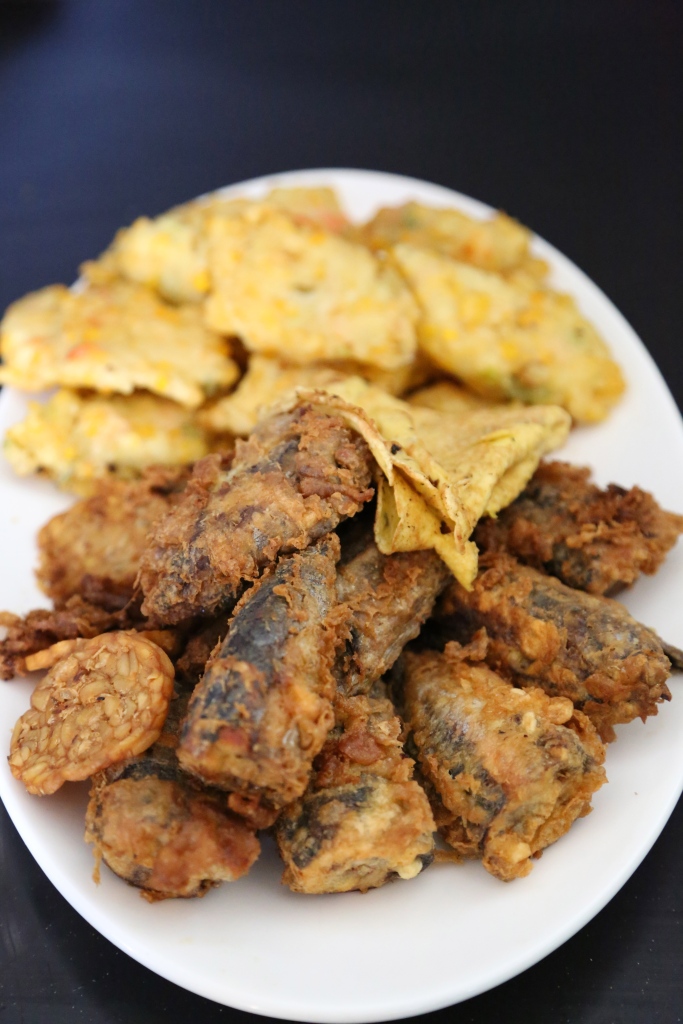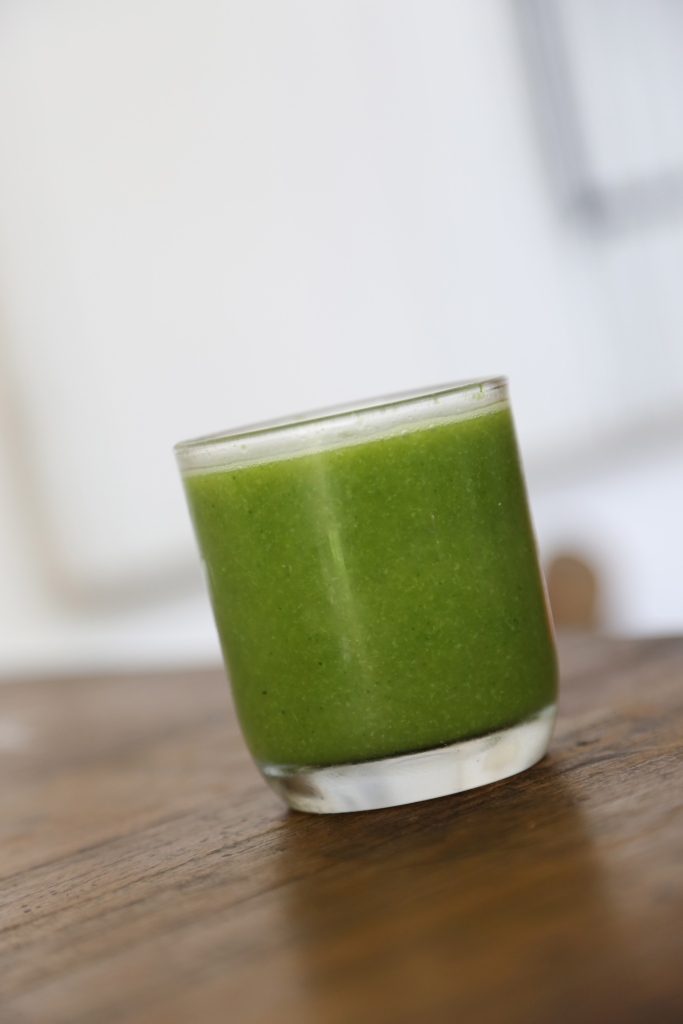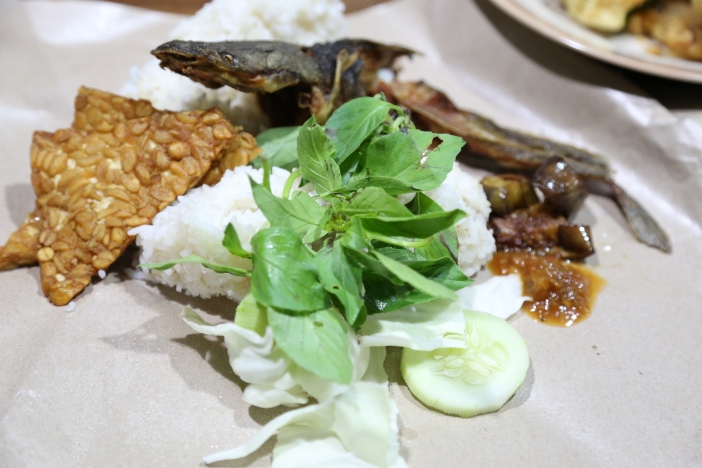Idul Fitri is the biggest culinary date in the Muslim calender. It marks the end of the fasting month. People make the annual pilgrimage home to their origin village and massive feasts are produced. For those who were unable to get home in 2014, we cooked our own feast in Yogyakarta. There was hours spent grinding the most fragrant spices. Toasted coconut filled the air for days. Meat is a priority for this event, especially rendang (the recipe is here). Rice is packed into bamboo woven squares and cooked with coconut milk and tumeric to make ketupat (recipe is here). Basically, its an all-you-can event of the freshest and tastiest dishes you’ll ever have!
Month: July 2014
When old cooking partners cook again
Recently, Jon’s oldest friend, fellow Sumatran, travel/food host Rahung Nasution came to Yogya to shoot an episode for his series on Java. The reunion resulted in big smiles and an awesome feast.
It was held at another old friend, Puthut Ea’s small cafe called ‘Mas Kali’. The cafe is based on an angkringan– a traditional semi-permanent food cart offering tea and coffee and small snacks for manual workers with not much time to spare. Every evening Mas Kali prepares some delicious delicacies of pan friend tofu and tempe and cups of tea for the end of the Muslim fasting day ‘buka puasa’. 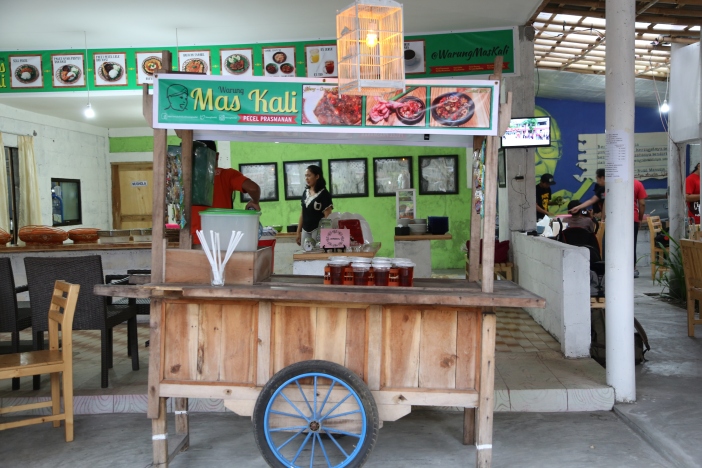
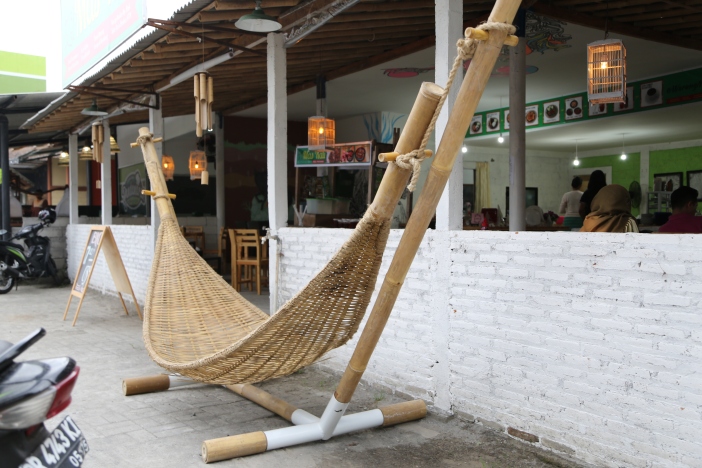
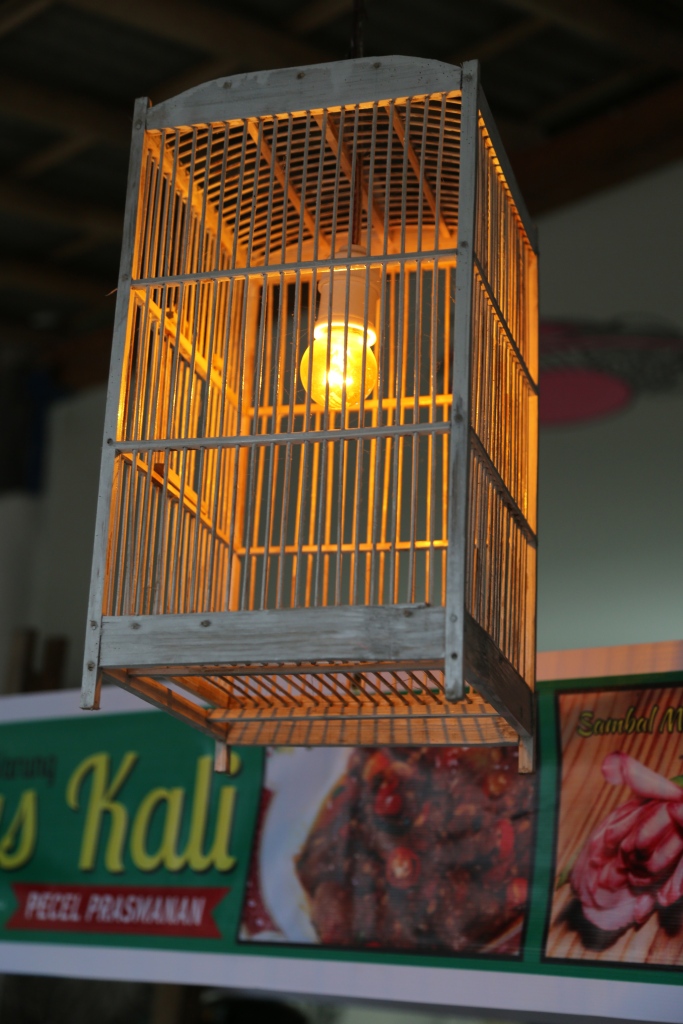
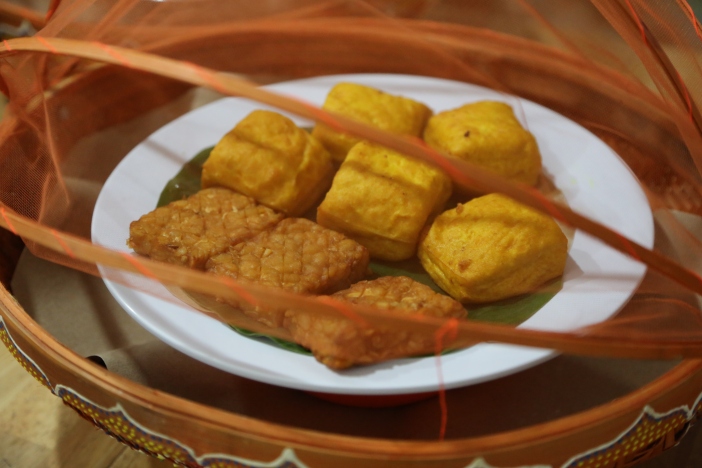
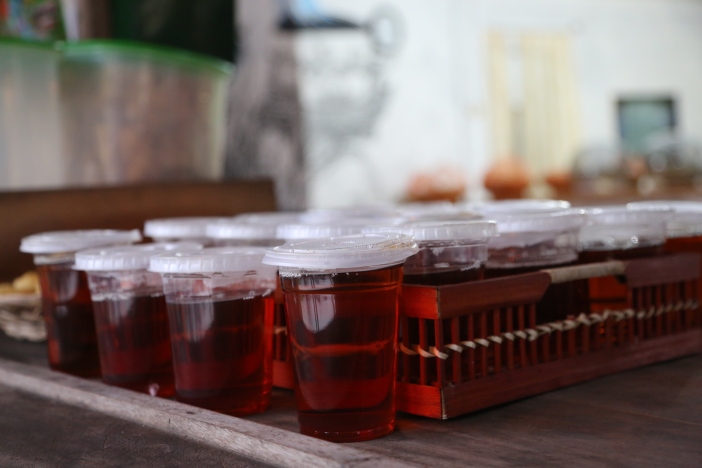 Then the cameras started rolling and it got down to the cooking.
Then the cameras started rolling and it got down to the cooking. 

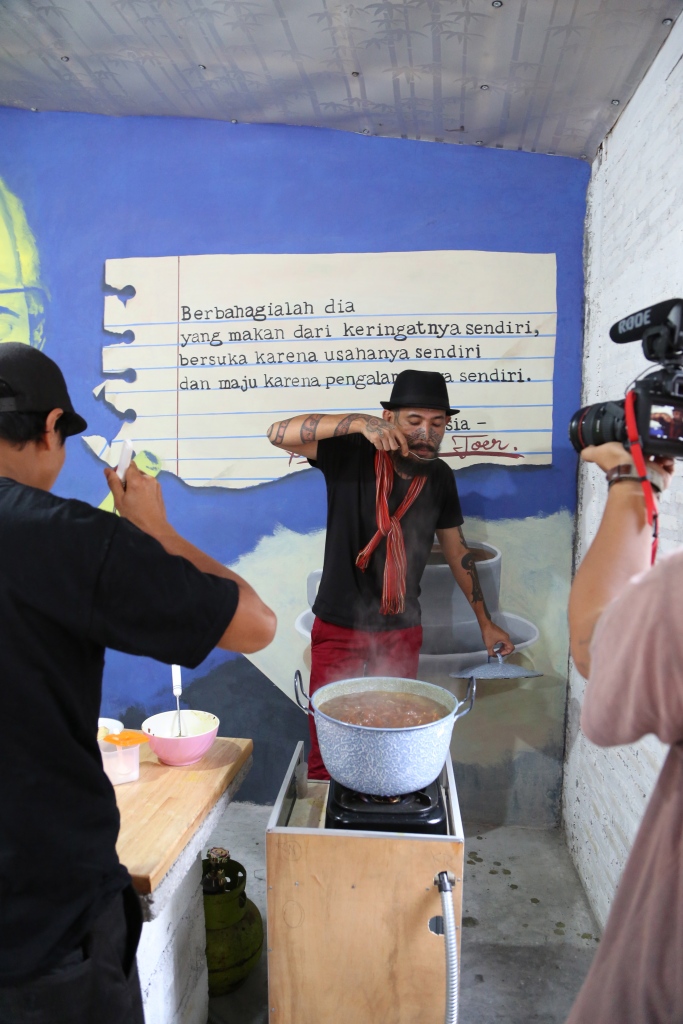
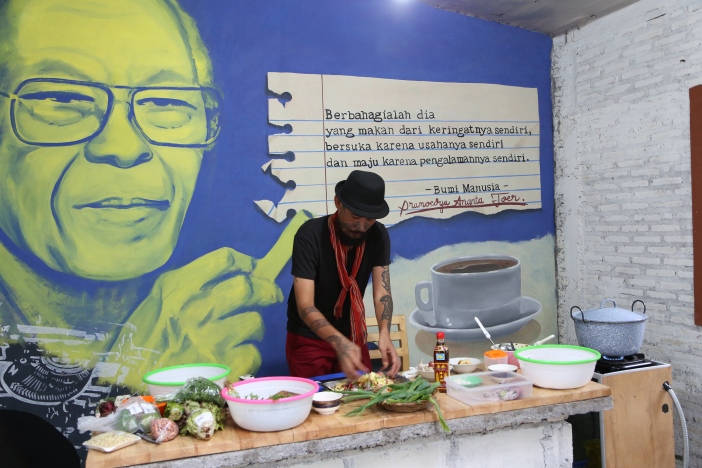
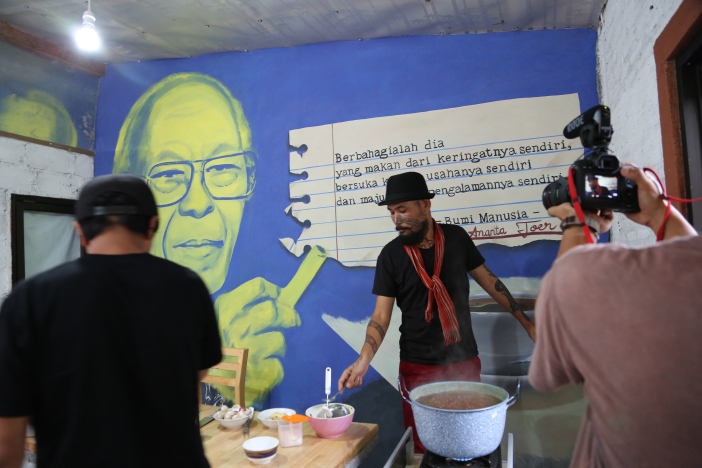

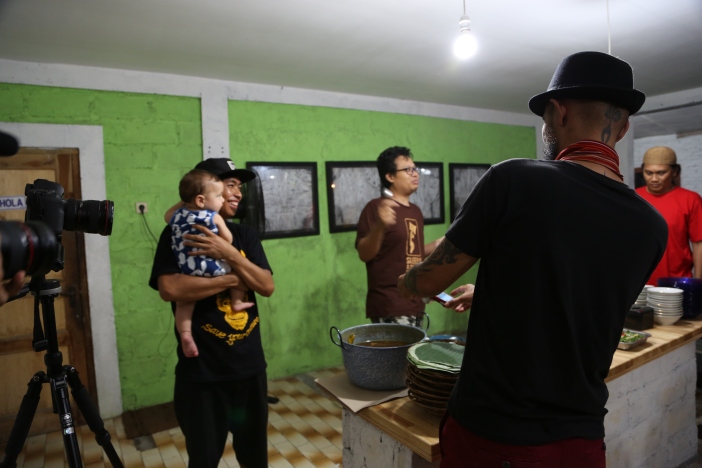
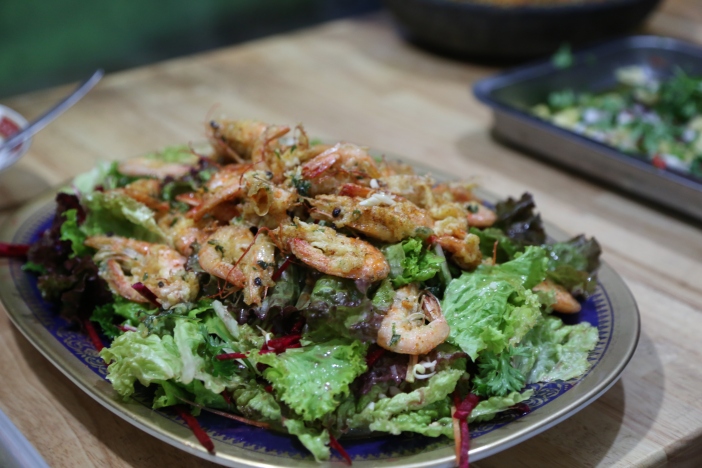
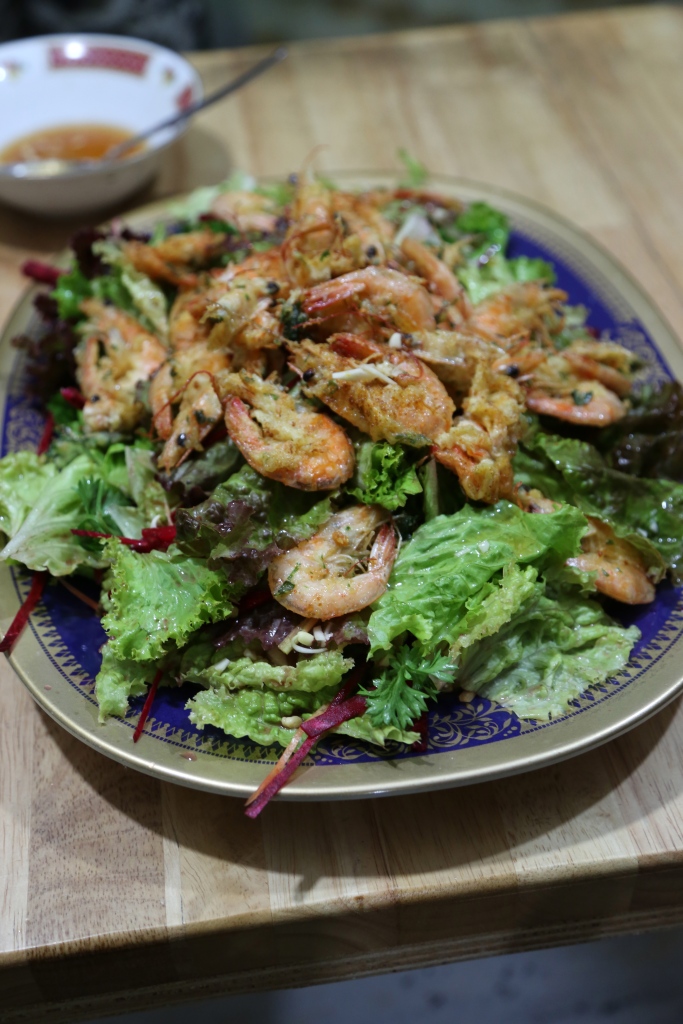
On the wall is a quote by Pramoedya Anata Toer, Indonesian social-humanist writer and postcolonial folk story teller who was incarcerated on Biru Island under Suharto. The quote from his book, Earth of Mankind reads:
Happy is she who eats from and delights in the efforts of her own sweat, and develops from her own experiences.
Healing hands and healing foods
We arrived at our friend, S Tedy D’s house in Yogyakarta. Tedy is a leading Indonesian contemporary artist. The house is an amazing combination of art house/kos (boarding house). Designed by Indonesian architect Eko Prawoto, renowned for working with local materials, it has open air living spaces, old teak doorways and the walls are lined with Tedy and friend’s artwork. We are grateful to be in such an amazing house with our old friend.
There is a playground in the middle of the house!
And a resident mutt called Kapten.
Our friend is sick and is in hospital at the moment. His mother (Ibu) is here. Every day Ibu tenderly prepares Javanese treats, packs it all neatly in her canvas tas pasar (market bag) and takes it to our friend in hospital. Ibu remains calm and practical; folding bamboo leaves to wrap and steam parcels of fish; cobbing corn for perkodel (potato cake), chopping green beans, dicing carrots for lodeh (clear soup), grinding chilli for sambal chilli sauce. The intricate and labour intensiveness of all this cooking is at the essence of her calmness.
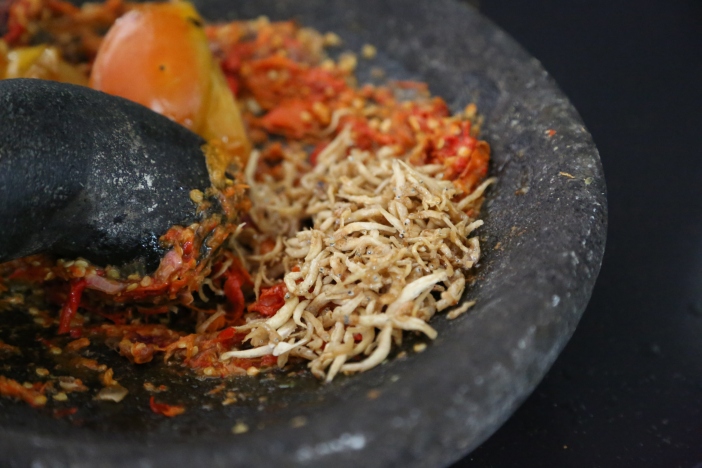 Yes, those little beadie eyes are fish.
Yes, those little beadie eyes are fish.
Ibu also makes a killer green smoothie of steamed broccoli, green beans, pineapple, watercress and spinach. Kale hipsters, eat your heart out.
Street Food and Street Smarts
In a recent article in Lucky Peach‘s special edition of street food, it was asserted that Malay street food was basically the same all over, you just had to get out there and try it.
High-fives for encouraging the newcomer LP, but it would be misleading to say that street food is all the same. Or even, that all street food is good.
In Yogyakarta, knowledge about street food operates as a critical organising principle of society. To know where to get the best Tempe Penyet, for example, is more than knowing your street food; it is to be street smart. ‘Wah! This is from Ibu Sri? Their tempe is too dry. The place to go is south of the ring road, just past the mosque on the left, about 20meters in…’ ‘NOOOOOO. That place USED to be good, but is terrible now! The best tempe now is over by the bridge, over in the west.’ And so on, these sorts of conversations about the best tempe/meatball soup/ginger tea can be heard right around the city: this city, and basically, every city in Asia. People are willing to drive to the complete opposite end of the city for the right Tempe Penyet.
Now, back to the tempe. Tempe Penyet is Javanese for ‘pressed tempe’. (tempe being the unrefined soy bean version of tofu). It is no longer ‘pressed’ but now comes in little triangles, fried after being rolled in a coriander and salt bath. Tempe Penyet is served with raw sliced cabbage, basil, slices of cucumber and sambal chilli sauce. And rice. I cannot express the enormity of my love for Tempe Penyet.
*Jon prefers the Pecel Lele (catfish- lurking behind the tempe)
Since arriving, we have reacquainted ourselves with daily discussions about where to get the best of tempe/organic rice/catfish… The discussions are animated, sometimes tense, and illustrate the absolute integrity of ingredients in a place where food is belonging.
